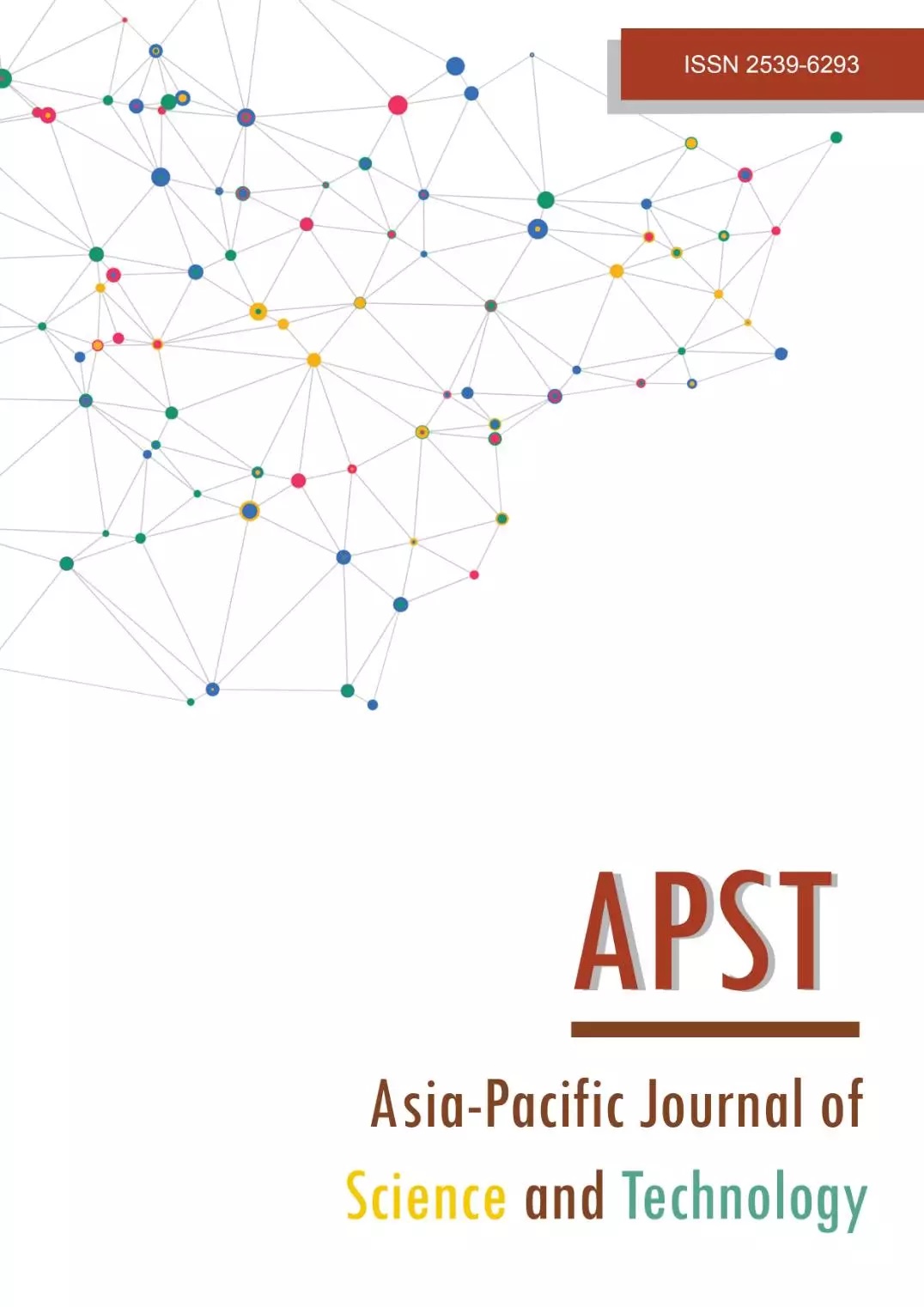Urine pH and treatment outcomes in women with uncomplicated acute pyelonephritis
Main Article Content
Abstract
Urine alkalinisation is commonly used in some countries for treatment of the symptomatic uncomplicated UTI. However, there is lack of evidence to support their use for UTI and lack of evidence to support the association between urine pH and treatment outcomes. Therefore, in this study, authors aimed to investigate the associations between urine pH and 1) treatment outcomes, 2) clinical symptoms after treatment and 3) cure of disease within 48 hours. A retrospective-cohort study was done using Khon Kaen Hospital inpatient electronic database registration from 1st January 2014 to 31st December 2016. One hundred and eight women with first diagnosis of uncomplicated acute pyelonephritis were divided by the range of urine pH into quartiles (Q) (1st Q = urine pH < 5.50, 2nd Q = urine pH 5.50-6.00, 3rd Q = urine pH 6.01-7.00, 4th Q = urine pH 7.01-8.00). The associations between urine pH in each Qs and treatment outcomes, clinical symptoms, and cure within 48 h, were analyzed. There was an association between each quartile of urine pH before and after treatment (p= 0.024). After treatment, patients that changed their urine pH to higher quartiles were found in 19.6% more than to lower quartiles. Second and 3rd Qs before treatment were associated with clinical improvement of dysuria (p < 0.001, both) and suprapubic pain (p < 0.001, and p = 0.008, respectively). In conclusion, there was no association observed between each Qs of urine pH and cure of disease within 48 h, in women with uncomplicated acute pyelonephritis.
Article Details

This work is licensed under a Creative Commons Attribution-NonCommercial-NoDerivatives 4.0 International License.
References
Ramakrishnan K, Scheid DC. Diagnosis and management of acute pyelonephritis in adults. Am Fam Physician. 2005;71(5):933-942.
National Institute for Health and Care Excellence (NICE). Urinary tract infections in adults [Internet]. 2015 [cited 2017 Jun 11]. Available from https://www.nice.org.uk/guidance/qs90/resources/urinary-tract-infections-in-adults-pdf-2098962322117.
Foxman B. Epidemiology of urinary tract infections: incidence, morbidity, and economic costs. Dis Mon. 2003;49(2):53-70.
Newport LP. Vesicoureteral reflux and pyelonephritis: risk factors, prevalence and treatment approaches. 1st ed. New York: Nova Science Publishers, Inc.; 2015.
Scholes D, Hooton TM, Roberts PL, Gupta K, Stapleton AE, Stamm WE. Risk factors associated with acute pyelonephritis in healthy women. Ann Intern Med. 2005;142(1):20-27.
National Institute for Health and Care Excellence (NICE). Pyelonephritis (acute): antimicrobial prescribing. Guidance and guidelines [Internet]. 2018 [cited 2017 Jun 11] Available from https://www.nice.org.uk/guidance/indevelopment/gid-apg10003.
Little P, Turner S, Rumsby K, Warner G, Moore M, Lowes JA, et al. Dipsticks and diagnostic algorithms in urinary tract infection: development and validation, randomised trial, economic analysis, observational cohort and qualitative study. Health Technol Assess. 2009;13(19):iii-iv, ix-xi, 1-73.
Simati B, Kriegsman B, Safranek S. FPIN's clinical inquiries. Dipstick urinalysis for the diagnosis of acute UTI. Am Fam Physician. 2013;87(10):1-2.
Schoor, J. Therapeutic use of alkalinising agents. Prof Nurs Today. 2011;15:39-43.
Blenkinsopp A, Paxton P, Blenkinsopp J. Symptoms in the pharmacy. 7th ed. Oxford: John Wiley & Sons Ltd; 2014.
Blenkinsopp A, Duerden M, Blenkinsopp J. Symptoms in the pharmacy. 8th ed. Oxford: John Wiley & Sons Ltd; 2018.
Spooner JB. Alkalinisation in the management of cystitis. J Int Med Res. 1984;12(1):30-34.
Rowe TA, Juthani-Mehta M. Diagnosis and management of urinary tract infection in older adults. Infect Dis Clin North Am. 2014;28(1):75-89.
Colgan R, Williams M, Johnson JR. Diagnosis and treatment of acute pyelonephritis in women. Am Fam Physician. 2011;84(5):519-526.
Gupta K, Hooton TM, Naber KG, Wullt B, Colgan R, Miller LG, et al. International clinical practice guidelines for the treatment of acute uncomplicated cystitis and pyelonephritis in women: a 2010 update by the infectious diseases society of America and the European society for microbiology and infectious diseases. Clin Infect Dis. 2011;52(5):e103-e120.
Lai HC, Chang SN, Lin HC, Hsu YL, Wei HM, Kuo CC, et al. Association between urine pH and common uropathogens in children with urinary tract infections. J Microbiol Immunol Infect. 2021;54(2):290-298.
Yang L, Wang K, Li H, Denstedt JD, Cadieux PA. The influence of urinary pH on antibiotic efficacy against bacterial uropathogens. Urology. 2014;84(3):731.e1-e7.
Munday PE, Savage S. Cymalon in the management of urinary tract symptoms. Genitourin Med. 1990;66(6):461.
Brumfitt W, Miller JMH, Cooper J, Raeburn A. Relationship of urinary pH to symptoms of 'cystitis'. Postgrad Med J. 1990;66(779):727-729.
Nguan C, Franciosi LG, Butterfield NN, Macleod BA, Jens M, Fenster HN. A prospective, double-blind, randomized cross-over study evaluating changes in urinary pH for relieving the symptoms of interstitial cystitis. BJU Int. 2005;95(1):91-94.
Wong LM, Huang JG, Yong TL, Robertson I, Brough SJ. Does sodium bicarbonate reduce painful voiding after flexible cystoscopy? A prospective, randomized, double-blind, controlled trial. BJU Int. 2011;108(5):718-721.
Qadir MI, Sabir I. Correlation of pH in urine with capacity of drinking water per day. IJRSMB. 2019;5(2):8-10.


